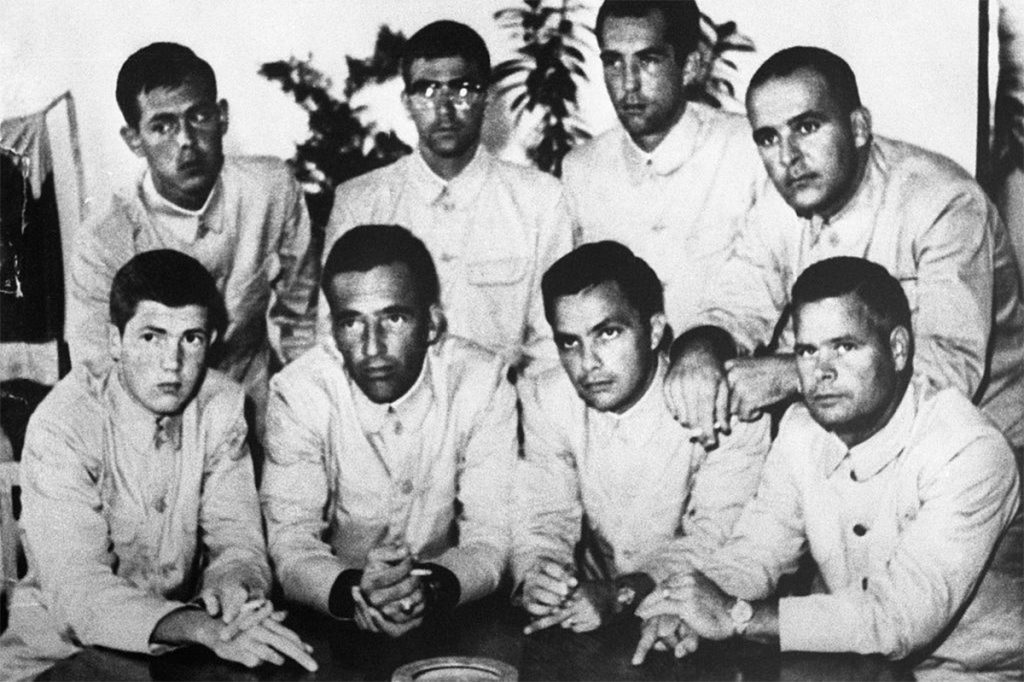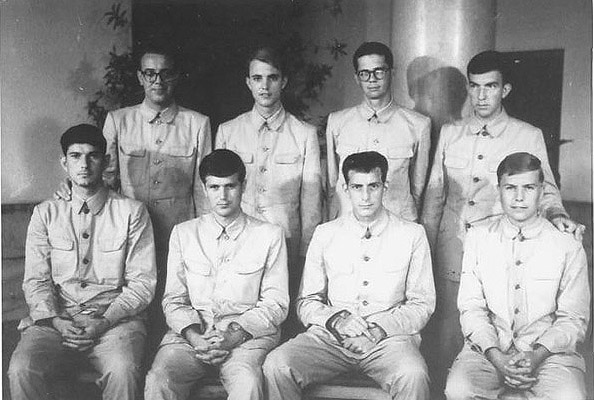The Prisoners Who Gave Their Captors the Bird
The USS Pueblo is an American spy ship originally commissioned at the tail end of World War II. Unlike virtually every other ship of its age, the Pueblo has not been retired — it is still in commission. But you won’t see it in battle any time soon, if ever. It’s moored in Pyongyang, North Korea, and not out of some goodwill effort from the United States. It’s on display at North Korea’s “Victorious War Museum,” acting as a trophy for the oppressive dictatorship.
It also gave us a gift: the first time, perhaps, that the middle finger was used as a secret code.
In January 1968, the Pueblo was operating in the Sea of Japan, well within international waters according to the United States Navy. The North Korean government disagreed, believing that the Pueblo had entered their territorial waters. Even though the Korean War had ended nearly 15 years prior, the two nations were anything but allies, and the North Koreans didn’t tolerate this perceived transgression. They attacked the Pueblo, killing one of the 83 men aboard, seizing the ship, and taking the surviving 82 as hostages.
The hostages’ accounts of their time in captivity relay tales of abusive treatment. As Atlas Obscura shares, “There they were housed in dim, cold cells, and beaten and tortured routinely by their captors. The men grew malnourished as they ate scant meals of turnips and a foul-smelling fish they derisively called ‘Sewer Trout.’ One man’s shrapnel wounds were treated sans anesthetic; his tonsils would also be removed without pain relief.” But the North Koreans didn’t want Americans to learn about this torture. Instead, they forced the hostages to pose for photos showing them in purported good health and good spirits — with the looming threat of violence if they decided to show anything else. The hostages, of course, cooperated — usually.
During one of their photo shoots, according to Atlas Obscura, one of the hostages impulsively and foolishly flicked off the cameraman — that is, nonverbally, he told his captors to go [you know what] themselves. However, none of the North Koreans seemed to care about the middle finger being extended in their general directions. It didn’t take long for the prisoners to figure out why — their captors had never seen the gesture before. From that point on, the prisoners decided that whenever they’d be forced to pose for the camera, at least one of them would flip the bird, as seen in the two images below, in an effort to strike back against their captors, and also to tell people back home that these photos were propaganda, not fact.

Over time, the North Koreans noticed that something was up (pardon the pun) — but they still didn’t understand the significance. And that gave a way for the prisoner to keep on with their small act of defiance. One of the captives, Lt. Skip Schumacher, explained the solution to the BBC, “We told them the finger was a Hawaiian good luck sign so they thought that was wonderful.”
From the moment that the hostages were taken captive, the American public was focused on their safe return. The photos, as intended by the North Koreans, made their way into the American press — and that turned out to be unfortunate for the captives. Time Magazine shared one of the photos, as seen here, with a caption noting that “three of the crewmen have managed to use the medium for a message, furtively getting off the U.S. hand signal for obscene deriviseness and contempt.” North Korean officials were monitoring U.S. media for mentions of the hostages, and upon seeing this, realized that their hostages were not as cooperative as believed. They beat the hostages severely, and the 82 men in captivity were certain that they would be killed shortly thereafter.
The American government, though, was able to secure their release. The North Koreans exchanged the hostages for a series of public apologies and statements praising North Korea by the Americans (and, behind the scenes, there were American threats of war or even a nuclear attack), and on December 23, 1968 — eleven months after North Korea captured the Pueblo — the hostages were given their freedom. But on the way out, the Americans had one more lewd joke to make. North Korea, as a condition of the sailors’ release, required their commanding officer to record an apology to his “host” nation; that message was played on the speakers as the hostages walked into South Korea and to freedom. As the BBC reported, Commander Lloyd M. Bucher issued a statement seeking to “praise” the North Korean Navy and the nation’s leader, Kim Il-sung. But he didn’t use the word “praise” — he “included the word ‘paean’ which translated as ‘to praise’ in the Korean-English dictionary but sounds like the phrase ‘to pee on.’”
Bonus fact: The first known photograph of someone giving the middle finger dates back to 1886, and was a lot more innocuous than hostage situations with North Korea. Major League Baseball was in its infancy at that point in history but rivalries were still very much present. That year, the Boston Beaneaters (a precursor of today’s Atlanta Braves) faced off against the New York Giants (today’s San Francisco Giants) on Opening Day. The Beaneaters had just acquired star pitcher Charles “Old Hoss” Radbourne from the Providence Grays, which had folded the year prior, and Radbourne was apparently no fan of the GIants. Before the game, the team posed for a group picture, as seen here. Radbourne, first from the left standing in the back row, flicked off the cameraman. (Here’s a close-up if you can’t see it on the team photo.)
From the Archives: A Tree Falls in North Korea: A special operation to cut down a tree.

